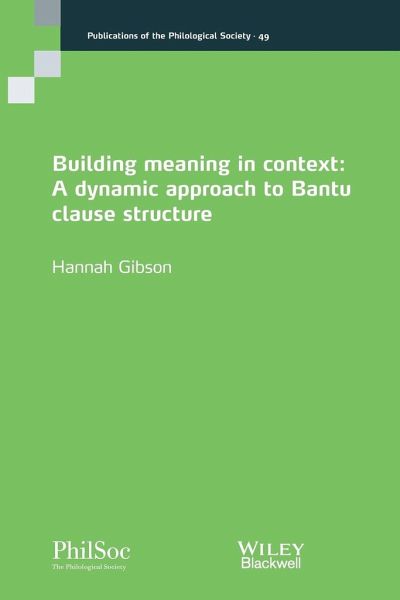
Building Meaning in Context
A Dynamic Approach to Bantu Clause Structure
Versandkostenfrei!
Versandfertig in über 4 Wochen
37,99 €
inkl. MwSt.

PAYBACK Punkte
19 °P sammeln!
Building Meaning in Context: A Dynamic Approach to Bantu Clause Structure uses the tools of the Dynamic Syntax framework to explore morphosyntactic phenomena in a number of Bantu languages._ Examines word order alternations, inversion constructions and negation in Bantu, showing the incremental nature of the build-up of meaning in context_ Highlights cross-linguistic parallels, drawing on data from Japanese, Korean, Romance languages and varieties of Greek_ Offers a radical new perspective on the nature of human language, showing the centrality of the concepts of underspecification and update ...
Building Meaning in Context: A Dynamic Approach to Bantu Clause Structure uses the tools of the Dynamic Syntax framework to explore morphosyntactic phenomena in a number of Bantu languages.
_ Examines word order alternations, inversion constructions and negation in Bantu, showing the incremental nature of the build-up of meaning in context
_ Highlights cross-linguistic parallels, drawing on data from Japanese, Korean, Romance languages and varieties of Greek
_ Offers a radical new perspective on the nature of human language, showing the centrality of the concepts of underspecification and update which lie at the heart of the DS structure building process
_ An innovative analysis with a broad empirical coverage
_ Examines word order alternations, inversion constructions and negation in Bantu, showing the incremental nature of the build-up of meaning in context
_ Highlights cross-linguistic parallels, drawing on data from Japanese, Korean, Romance languages and varieties of Greek
_ Offers a radical new perspective on the nature of human language, showing the centrality of the concepts of underspecification and update which lie at the heart of the DS structure building process
_ An innovative analysis with a broad empirical coverage


